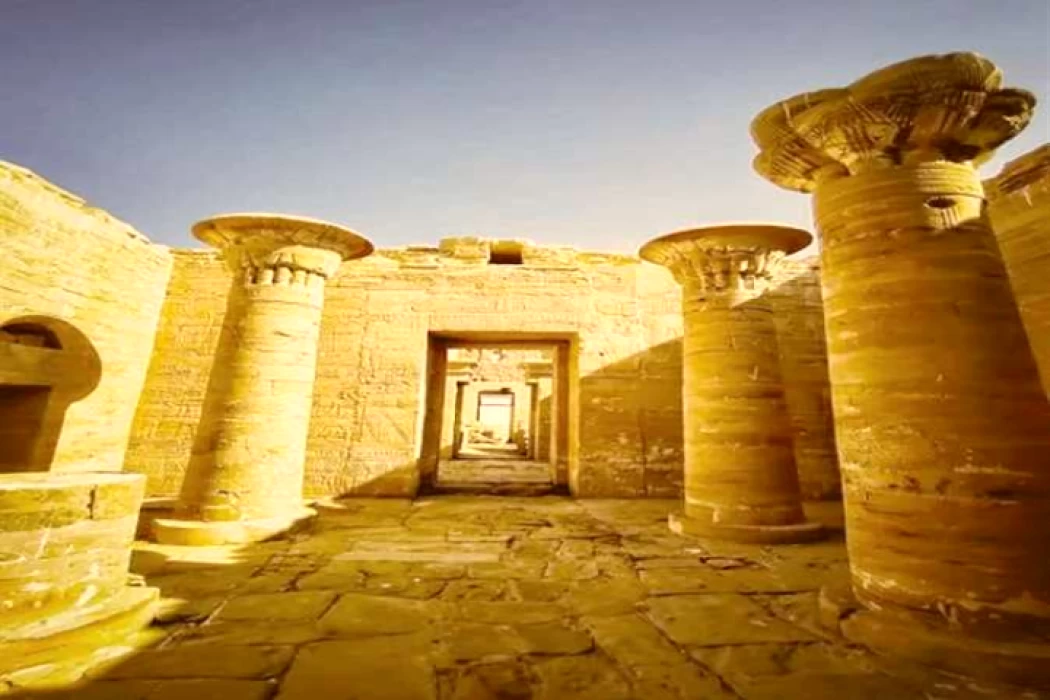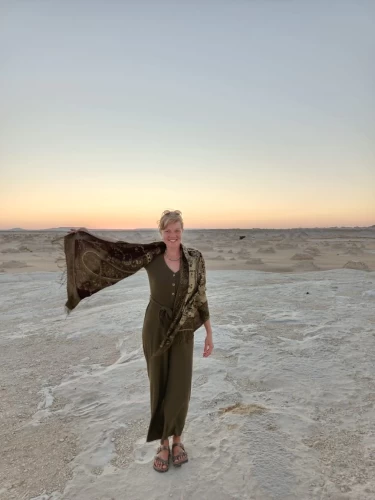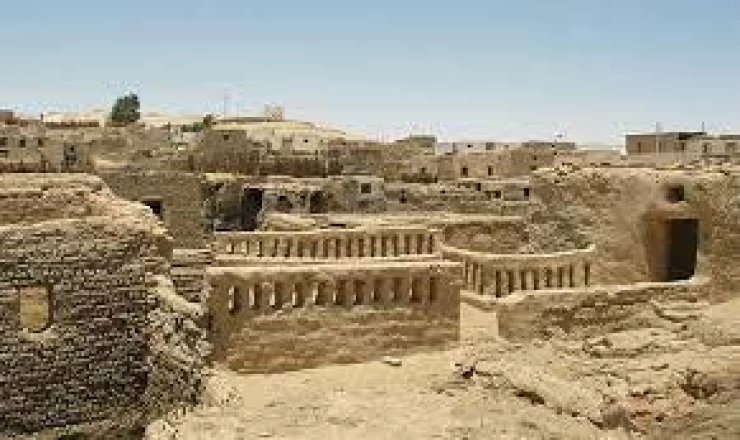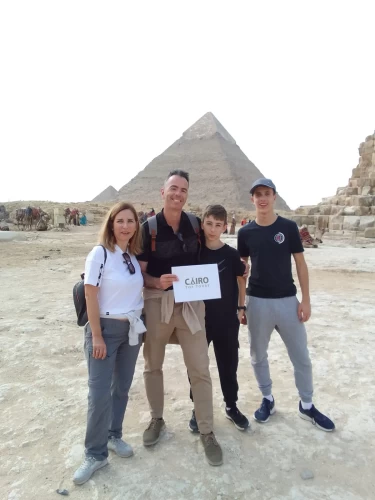
Ghweita Temple in Kharga Oasis
Ghweita Temple in Kharga Oasis
The temple was a crossroads of trade routes on the Darb al-Arba'in road, and it represented a fortress or fortress to monitor this trade route, like most of the oasis temples, which served as fortresses to defend the oases against any attacks or raids by some tribes. The temple was built of sandstone, surrounded by some outbuildings made of bricks, and a huge wall surrounds the temple. The temple was dedicated to the holy Trinity of Thebes, Amun, Mut, and Khonsu. The temple was in the middle of agricultural land next to a spring of water.
In the Ptolemaic period, the temple was called (Bar and Sokht), which means "the spacious house."
The history of the construction of the current temple dates back to the Roman era, and it is believed that the current temple was built on the remains of an ancient temple, possibly dating back to the earlier era of the Second Intifada.
The residential area to the north of the temple dates back to this era, and the oldest parts of the current temple date back to the 27th Dynasty.
An inscription was found in the name of King Dara I in the Holy of Holies of the temple, then the interest of the Ptolemaic kings appeared in the temple and various additions were added to it, where royal cartouches appeared dating back to the era of King Ptolemy III, King Ptolemy IV, and King Ptolemy IX, as well as a view of King Ptolemy IX. The tenth. It is possible that the temple was reused in the Coptic era, where the names of some monks appeared on the walls of the temple and the shapes of the cross also appeared.
the name of the temple was the Ghuwaita temple in relation to a spring of water next to the temple, which means (the small field). The front door leads to the hall of the Holy of Holies.
It was rebuilt in the Roman era and was taken as a fortress to be a supervisor, observer, and insured some of the ancient desert roads and paths, which were crossings for trade since ancient times, such as the Darb Al-Arba’een road that passes west of the temple, as it is the road that started from Assiut through the oases and reaching Darfur in Sudan. Also east of the temple is the Derb Bulaq road, which is used to connect the oases and the Nile Valley, pointing out that the site is a meeting point for passing trade caravans and supplies, which increased the importance of this site through successive historical eras.

















